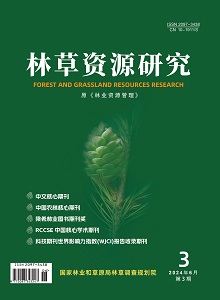Analysis of Forest Fire Risk Effects on the Optimal Rotation of Carbon Sequestration Forests
HUANG Zaisheng,CHEN Qin
2015,(6):
88-93.
doi:10.13466/j.cnki.lyzygl.2015.06.017
 Asbtract
(
319 )
Asbtract
(
319 )
 PDF (1188KB)
(
305
)
References |
Related Articles |
Metrics
PDF (1188KB)
(
305
)
References |
Related Articles |
Metrics
An optimal rotation evaluation model was built for the forest carbon sequestration forest which took account of the fire risk under infinite horizon,and the empirical analysis carried out for the Slash pine carbon sequestration forests in Rui’an city of Zhejiang Province.The result showed thatfirstly,when forest fire risk rate increased to 1.10% and 2.50%,the optimal rotation of Slash pine carbon sequestration forests was shorten from 17 years to 16 years and 15 years respectively,and since then,it no longer changed;secondly,when the carbon price was 55 yuan/t,its optimal rotation was shorten from 18 years to 17 years,but the influence of the carbon price was limited;thirdly,different forest fire risk rate and the carbon price could be combined into the optimal rotation frontier,which was a polygon area;fourthly,the relationship between forest fire risk rate and the changing rate of carbon sequestration forests net present value was a power function,namely with the rate of forest fire risk arising,the decreased degree of its net present value would become smaller;lastly,when forest fire risk rate declined from 0.10% to 0.04%,the maximum cost that carbon sequestration forest management would pay was 805.96 yuan/hm2,which accounted for 2.40% of the total net present value of carbon sequestration forest,when the carbon price was 55yuan/t.

